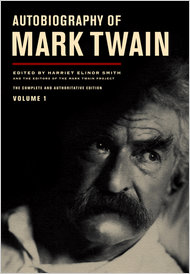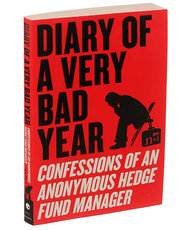- HOME
- INTRO TO THE FORUM
- USE AND MISUSE
- BADLY WRITTEN, BADLY SPOKEN
- GETTING
TO KNOW ENGLISH - PREPARING FOR ENGLISH PROFICIENCY TESTS
- GOING DEEPER INTO ENGLISH
- YOU ASKED ME THIS QUESTION
- EDUCATION AND TEACHING FORUM
- ADVICE AND DISSENT
- MY MEDIA ENGLISH WATCH
- STUDENTS' SOUNDING BOARD
- LANGUAGE HUMOR AT ITS FINEST
- THE LOUNGE
- NOTABLE WORKS BY OUR VERY OWN
- ESSAYS BY JOSE CARILLO
- On Those Two Most Dreadful Clichés
- Elliptical Sentences Often Read And Sound Better Than Regular Sentences
- Avoiding The Embarrassing Pitfall Of Misusing Certain English Words
- Getting A Better Handle On When To Use Or To Just Knock Off “That”
- How To Avoid Semantic Bedlam In The Usage Of The Word “Only”
- Why Is The Sentence “It Can Be Overcame” Grammatically Wrong?
- ABOUT JOSE CARILLO
- READINGS ABOUT LANGUAGE
- TIME OUT FROM ENGLISH GRAMMAR
- NEWS AND COMMENTARY
- BOOKSHOP
- ARCHIVES
TIME OUT FROM ENGLISH GRAMMAR
This section features wide-ranging, thought-provoking articles in English on any subject under the sun. Its objective is to present new, mind-changing ideas as well as to show to serious students of English how the various tools of the language can be felicitously harnessed to report a momentous or life-changing finding or event, to espouse or oppose an idea, or to express a deeply felt view about the world around us.
The outstanding English-language expositions to be featured here will mostly be presented through links to the websites that carry them. To put a particular work in better context, links to critiques, biographical sketches, and various other material about the author and his or her works will usually be also provided.
I hope you’ll enjoy the new selections that will be presented here.Joe Carillo
Four provocative readings to rekindle our imagination
We have four very provocative readings for our time out from English grammar this week: the first an intriguing account of how the New World got named not after its true discoverer but after a latter-day voyager; the second about the forthcoming release of the unexpurgated, politically explosive autobiography of Mark Twain; the third a review of a book that tells the harrowing story an American hedge fund manager who got swept in the spectacular 2007 collapse of the US financial markets; and the fourth about a respected physicist who seriously thinks that gravity doesn’t exist and that it’s simply “an illusion or side effect of something else going on at deeper levels of reality.”
Naming the New World. In “How America got its name: The surprising story of an obscure scholar, an adventurer’s letter, and a pun,” an article written for the July 4, 2010 issue of the Boston Globe, Toby Lester recounts how a young Alsatian proofreader by the name of Matthias Ringmann had taken it upon himself to attach to the New World the name of Amerigo Vespucci, a merchant and explorer from Florence, rather than the name of Christopher Columbus, who had landed on the New World years before Vespucci did. How did such a thing happen? According to Lester, this was because Ringmann was involved in the making of the very first map of the New World, sincerely believed in Vespucci’s principal role in its discovery, and “deliberately invested the name America with ideas that still make up important parts of our national psyche: powerful notions of westward expansion, self-reinvention, and even manifest destiny.”
Read Toby Lester’s “How America got its name” in the Boston Globe now!

Mark Twain Up Close and Personal. In “Dead for a Century, Twain Says What He Meant,” an advance review in the July 9, 2010 issue of The New York Times about the forthcoming unexpurgated autobiography of Mark Twain, Larry Rohter says that a very different Twain, “more pointedly political and willing to play the role of the angry prophet,” emerges from the book. Rohter observes that Twain had made clear in his own words his strong opposition to American imperialism and the military intervention of the United States in Cuba and in the Philippines. Indeed, commenting in particular on the attack by American troops of a tribal group in the Philippines, Twain called the American troops “our informed assassins” and described their killing of “six hundred helpless and weaponless savages” as “a long and happy picnic with nothing to do but sit in comfort and fire the Golden Rule into those people down there and imagine letters to write home to the admiring families, and pile glory upon glory.”
Read Larry Rohter’s review of Mark Twain’s autobiography in The New York Times now!

Frazzled Chronicle of Shock and Despair. In “Here’s Why the Cookie Crumbled,” a review of Diary of a Very Bad Year: Confessions of an Anonymous Hedge Fund Manager in the July 13, 2010 issue of The New York Times, Dwight Garner describes the book as “an urbane if frazzled chronicle of shock and despair” by a New York hedge fund manager—he remains unnamed in the book—who got caught in the global banking crisis triggered by the disastrous collapse of the subprime mortgage business in the United States in 2007. Based on a series of interviews of the hedge fund manager by novelist and literary editor Keith Gessen, Diary of a Very Bad Year tells of how bad it got during the financial meltdown, when so many bankruptcies became an everyday occurrence. “You know what it’s like?” the beleaguered subject of the interviews asked. “It’s like somebody drops a depth charge onto a submarine, and you hear a big explosion, but you don’t know what’s happening. Like, a little while later bodies start to bob up? We’re waiting for the bodies to bob up.”
Read Dwight Garner’s “Here’s Why the Cookie Crumbled” in The New York Times now!
Read an excerpt from the book Diary of a Very Bad Year now!
World Without Gravity. In “A Scientist Takes On Gravity,” an article that came out in the July 12, 2010 issue of The New York Times, Dennis Overbyte writes about the recent contention of Dr. Erik Verlinde, a respected 48-year-old string theorist and physics professor at the University of Amsterdam, that gravity doesn’t exist and is just an illusion—a claim that reverses the logic of 300 years of science. In a paper titled “On the Origin of Gravity and the Laws of Newton,” Verlinde says that gravity is just a consequence of the venerable laws of thermodynamics, which describe the behavior of heat and gases. By making this claim, Overbyte says, Verlinde has joined a number of physicists “who say that science has been looking at gravity the wrong way and that there is something more basic, from which gravity ‘emerges,’ the way stock markets emerge from the collective behavior of individual investors or that elasticity emerges from the mechanics of atoms.”
Read Dennis Overbytes “A Scientist Takes On Gravity” in The New York Times now!






